Fe y Alegría: Creating Faith and Joy in El Salvador
BY GUEST BLOGGER | March 30, 2015
written by: Caitlin-Marie Ward, graduate intern at the Jesuit Conference National Advocacy Office and parishioner at Holy Trinity Catholic Church in Washington, D.C.
For the last 25 years, Maria Madre de los Pobres in the neighborhood of La Chacra in El Salvador has been the sister parish of Holy Trinity, a Jesuit parish here in Washington, D.C. Since 1989, parishioners from Holy Trinity have traveled down to El Salvador to share in the life and liturgy of Maria Madre de los Pobres. Located next to the parish, is a Fe y Alegría[1] school. Its proximity to Maria Madre has allowed Holy Trinity parishioners the opportunity to get to know the school, its mission, its students, and some of its faculty. Among its hardest working and most dedicated staff is Sister Cruz María Hernández Mendez, who recently traveled to Washington, D.C. and stopped by the Jesuit Conference to discuss her ministry amongst the youth of El Salvador.

Sr. Cruz speaking to a group of children at Maria Madre de los Pobres.
Sister Cruz is from Cabañas in the north central part of El Salvador, near Chalatenango. After her father learned he was on a hit list, Sister Cruz and her family were forced to flee San Salvador. “We had to leave to save our lives,” she said. They lived near the parish of El Despertar, which was once ministered by Father Octavio Ortiz Luna before he was assassinated by Salvadoran government troops in 1979.
At 18, Sister Cruz, joined the Order of Saint Clare, which was founded by Saint Clare of Assisi and Saint Francis of Assisi on Palm Sunday in the year 1212. In her current capacity with the Sisters of Saint Clare, Sister Cruz teaches English to the students at Fe y Alegría in the neighborhood of La Chacra in San Salvador. She began working at Fe y Alegría in 1998 and was principal from 2009 until 2014.
Fe y Alegría in El Salvador was founded in 1969 by the Jesuit priest Joaquín López y López, one of the priests assassinated by paramilitary forces at the University of Central America in 1989. After its foundation, the administration of the school was immediately handed over to the Sisters of Assumption, who ran the school until they turned it over to the Order of Saint Clare in 1998.
The very first Fe y Alegría school was founded in 1955 in Venezuela by the Jesuit priest José María Vélaz. Today, Fe y Alegría schools can be found in 19 countries across Latin America. From its inception, this network of schools has been directed towards improving the quality of life for the poor through primary, secondary, trade, and technical school programs. The school in La Chacra offers education to students from primary school through high school as well as workshops for technical training. Today, students in the seventh, eighth, and ninth grades are expected to attend job training workshops at the school in the afternoons. “The idea is to provide them with tools in case they don’t continue studying in high school or university,” Sister Cruz explained. Workshops include sewing, electricity, computer, bakery, painting, and more.
Seeing this mission through has never been easy. During the 1970s and 1980s, Fe y Alegría schools in El Salvador suffered political persecution at the hands of government and paramilitary forces. Today, gangs threaten the safety and well-being of the students and teachers. Sister Cruz spoke of the difficulty some children have in reaching campus due to an inability to cross gang boundaries between their homes and the school. Those unable to find alternate routes have been forced to abandon their education at Fe y Alegría, which has seen a significant drop in its enrollment rates. “When I was principal,” said Sister Cruz, “I used to have more than 900 [students]. The least I had was 875.” Currently, the school has fewer than 800 enrolled students. Students have also been psychologically affected by the violence. Sister Cruz recalled one morning when several distressed students reported having seen dismembered body parts strewn across the road as they made their way to school that day — evidence of a gang’s latest blood-filled campaign.
Violence in El Salvador is a complex issue with several root causes. Gangs began to spring up around El Salvador when youth who had fled to the United States with their families during the civil war, began to be deported en masse back to their home countries. Many of these young people were caught up in the gang culture on the streets of Los Angeles. When they were deported, they brought that culture back to El Salvador with them. “On the other hand,” said Sister Cruz, “[Violence] has its origins in a country that has never escaped from poverty. Unemployment has been the root of all the bad things that have occurred in El Salvador. People don’t have money, so they emigrate. People don’t have money, so families fight. People don’t have money, so they kill. And the poor always suffer the consequences.”
To combat the rising levels of violence in La Chacra, community leaders from the business sector, local government, NGOs, teachers, church pastors, and health experts all united to identify key areas to target in order to foster peace in the community. A SWAT (strengths, weaknesses, opportunities, and threats) analysis was done and the group committed itself to using local resources and local human capital. The group also consulted with Padre Toño who ran a successful gang-intervention program in the Mejicanos municipality of San Salvador for many years. Distinct groups developed each part of the plan separately, and Sister Cruz helped compile them all together into a master plan.
The plan is comprised of four parts — formation, social cohesion, accompaniment, and entrepreneurship — each with short, medium, and long-term goals. The plan aims to provide support and resources to youth who, due to poverty and family circumstances, are at-risk for gang recruitment. The plan also includes parent education, job training, and broad community activities and actions. Bit by bit, Sister Cruz hopes the plan will help change the perspective people in El Salvador have towards La Chacra by creating a culture of peace.
In February, with the help of a team of about 50 youth leaders with special training, Sister Cruz launched a youth formation component to the plan. Developing youths’ potential is one of the most effective ways of combating violence. “We must give youth the proper attention, so that they may become capable of changing their realities. We need to believe it is possible for them to open doors and seek new paths. There is currently an image of youth that says, ‘to be young is a crime.’ Our young people cannot go out, they cannot play safely where they want to, they cannot study where they want to, they cannot love where they want to. Through the peace plan we must reestablish the idea that there are good boys and girls who just want a chance at life.” The team selected by Sister Cruz identified activities and currently help run the Saturday program at Fe y Alegría, which includes sports, the Arts, and prayer/values education. All of the instructors, including a psychologist, are local to the community. This is one of the most important overall aspects of the plan: local ownership, local resources, local leaders.
The task ahead is daunting, but its success is far from impossible. It will, however, require the help of a broad basis of people including the international community. When asked how people in the United States could get involved in supporting her efforts at Fe y Alegría and creating peace in La Chacra, Sister Cruz said, “Any support people can give us would be very helpful. We can do many things, but we cannot do anything without resources.” Possible activities include organizing drives through schools and parishes to collect school supplies and recreational equipment to send to Fe y Alegría. Those looking to make a bigger commitment may also consider sponsoring a child who attends Fe y Alegría or one of the other local schools in the community. Finally, volunteers are always welcome on the annual delegations through Holy Trinity to learn first-hand the ways in which Sister Cruz and the community of La Chacra battle violence and poverty to create hope and opportunity for a better future in El Salvador.
Information on past and upcoming delegation to El Salvador as well as child-sponsorship can be found here.
[1] The Fe y Alegria model is meant to promote quality public education for poor students. In most countries where Fe y Alegria operates, the pedagogy, the building and materials are supplied by Fe y Alegria while the local government agrees to pay the teacher salaries.
ISN welcomes faith & justice related blog submissions from members of the Ignatian family. Please let us know of any blog ideas or posts using this form: ISN Blog Ideas

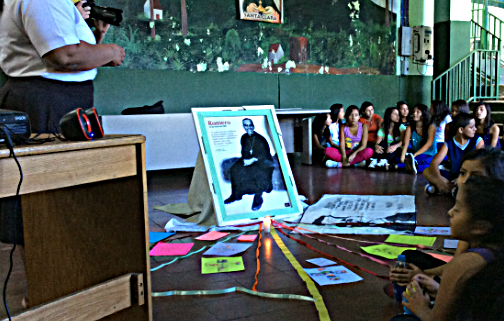
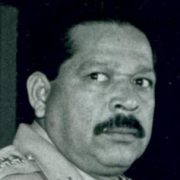
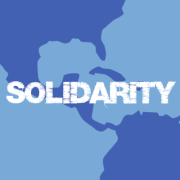
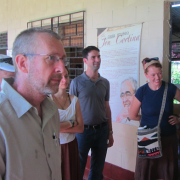
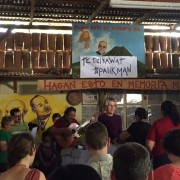
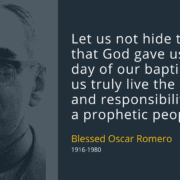




Right here is the right website for everyone who hopes to understand this topic.
You understand so much its almost tough to argue with you (not that I personally would want to…HaHa).
You certainly put a brand new spin on a subject that has been discussed for a long
time. Excellent stuff, just great!